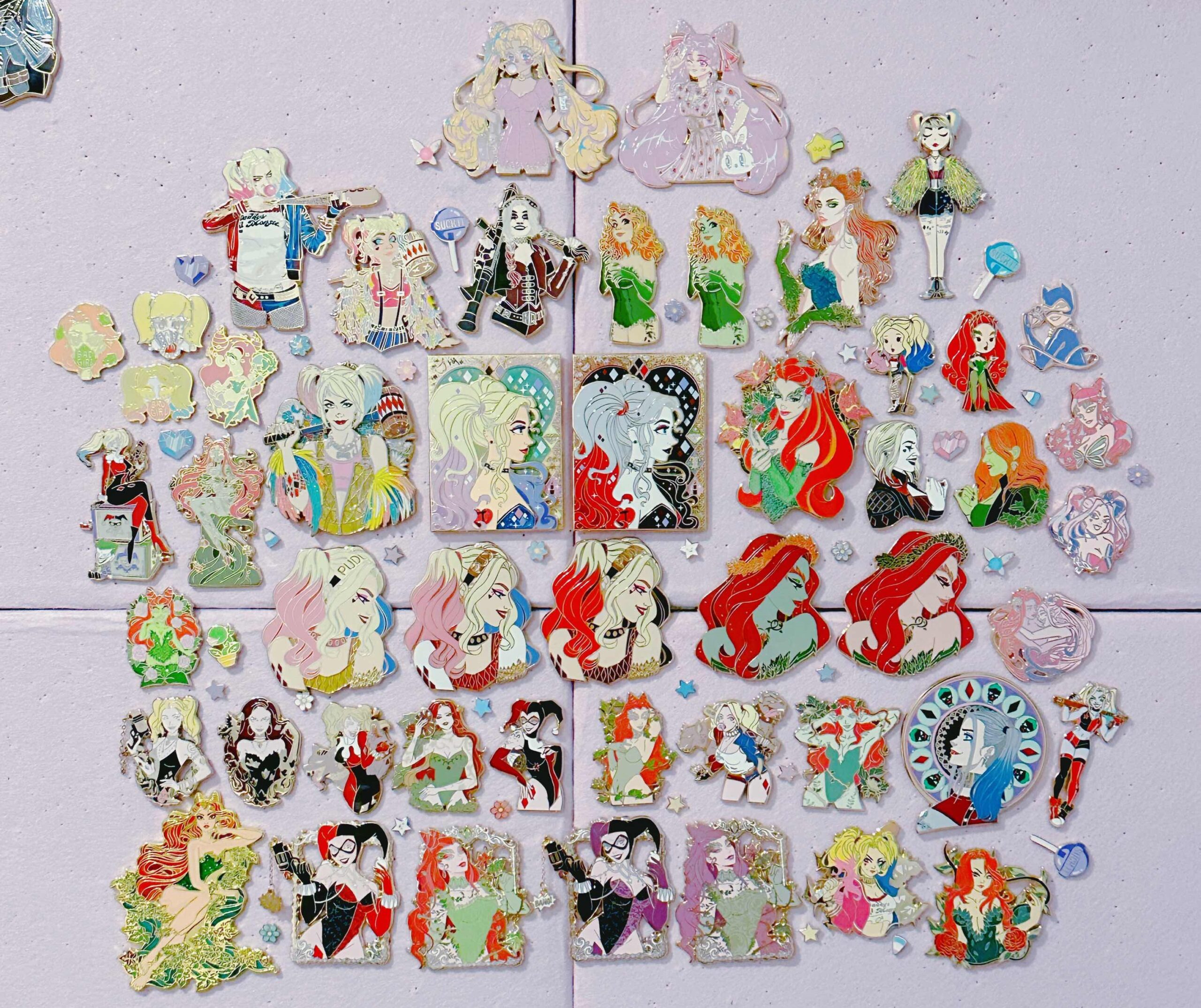Instagram user’s “Harleypinzel” entire collection featuring Harley Quinn, Poison Ivy, and Sailor Moon pins. Courtesy of Taylor “Harleypinzel” on Instagram
By Jasmine Sanchez Staff Reporter
In one of the dark crevices of the internet lies an ever-growing online community of pin-collecting enthusiasts. The collecting of enamel pins, decorative pieces of metal, has accumulated a large audience in recent years. The community continues to expand as more themes and fandoms grace the scene; allowing an abundance of individuals to venture into the community.
Carlos May, a recent transfer student at California University State Long Beach and a two-year keen collector, first learned of the community through a combination of the COVID-19 pandemic and second-hand information from a friend. He recalled, “[My] friend [would] go on and on about pins until one day he convinced me to start a collection…” Thus, finding himself willfully ensnared within the community.
The enamel pin community is not so different from other online communities. Groups have been created on Discord and Facebook to interconnect the community with one another, supplying a safe place to bond over shared hobbies and distribute pivotal information. These groups allow community members to be up to date with the status of pre-orders, updates on multiple businesses, upcoming pre-sales, fraud alerts, etc.
Instagram is another platform that is prevalently used within the community and is used to share the highs and lows of an individual’s journey. Stories are shared in either celebrating a purchase of a highly sought pin or in devastation as the pin they wanted, sold out before they could complete the necessary purchase information.
The social media site supplies a snapshot of an individual’s personality and interests. To the community, pin collecting is more than hanging up decorative metal on pin boards or wearing pins as accessories. The hobby creates a window to learn more about the individual partaking in the hobby. Reflecting on preferred styles, themes, and fandoms. It brings like-minded people together and creates long-lasting bonds.
“I have quite a few friendships to thank due to the community. I don’t think I would have the friends on here [or find] people who collect the same things as me if I didn’t find the community,” Taylor, a veteran pin collector known as Harleypinzel on Instagram, said. They’ve been in the pin-collecting space since 2012.
The community offers a predominantly positive experience, however, oftentimes it is dampened by scammers and scalpers. Scamming is not a new concept for the community as there have been many attempts to defraud members of their money and or pins. It is an ever-increasing problem as more individuals take part in the hobby.
Mel, the owner of a small business, Out Of This World Pins, takes part in selling and trading pins. She voiced her experience to be “nothing but positive” and considers herself to be “lucky [because she’s] heard horror stories.”
There are two common frauds to look out for. The first is a scammer pretending to be in possession of a highly sought-after pin. They will use someone else’s picture and present it as their own, posting on social media they are willing to sell or trade. To combat this type of swindle, most collectors ask for more pictures of the pin, look for validity in earlier posts, or search various Instagram accounts and Facebook groups dedicated to exposing scammers.
The second is posing to be an upcoming seller. These types of scammers tend to post art concepts and fake updates to string along collectors until they’ve received copious amounts of money. These types of frauds go on for months and eventually will ghost the individuals who fall victim. Obtaining stolen money is typically straightforward as banks usually address fraud claims diligently.
With scammers, scalpers are not too far behind. They’ll buy popular and limited-edition pins to sell them for an absurd amount of money. The price of pins depends on a variety of factors: the sizing of the pin, the number of colors and special effects used, the quality of the details in the concept art, and the number of pins manufactured. Scalpers use knowledge of the community to calculate the potential value of pins. Some go so far as to resell them for hundreds or even thousands of dollars.
Carlos said, “Despite the bad, the good overall prevails for me on a personal note. [If] I had to describe the pin community… I would say that we as a whole are friendly, dependable and straight up just crazy when it comes to pins.”

